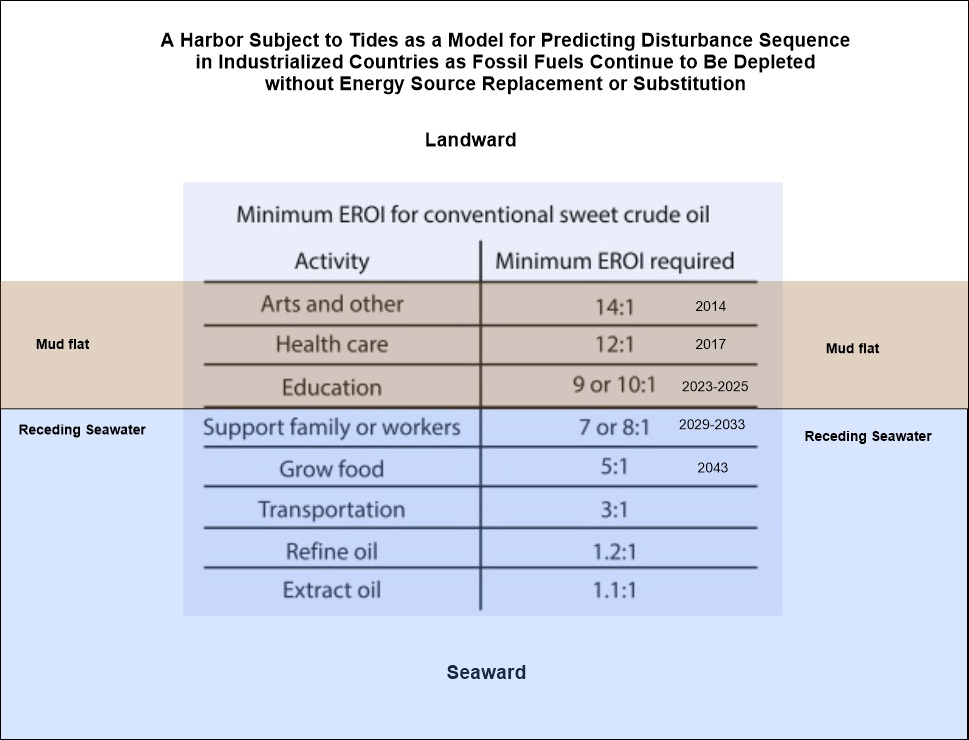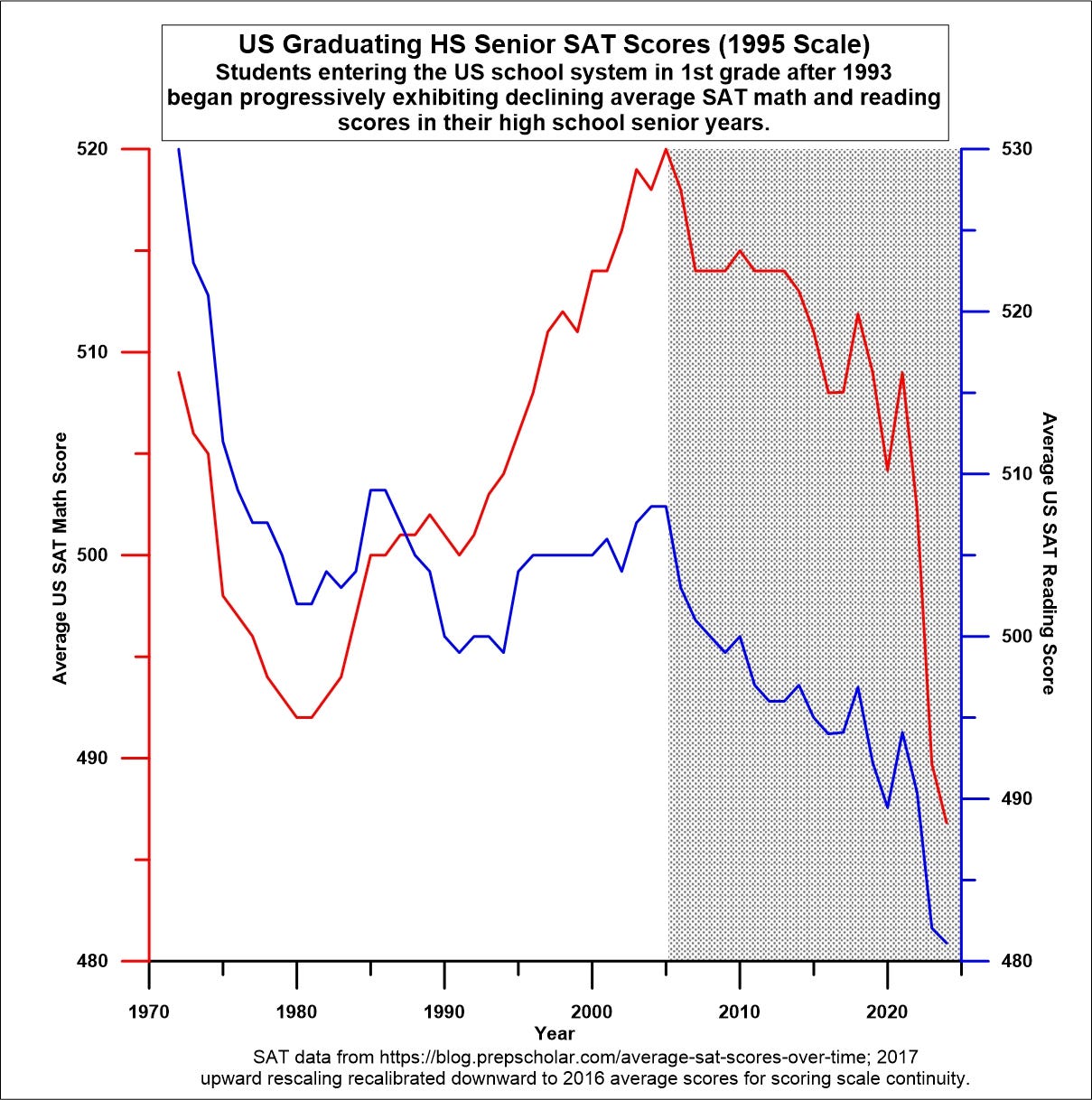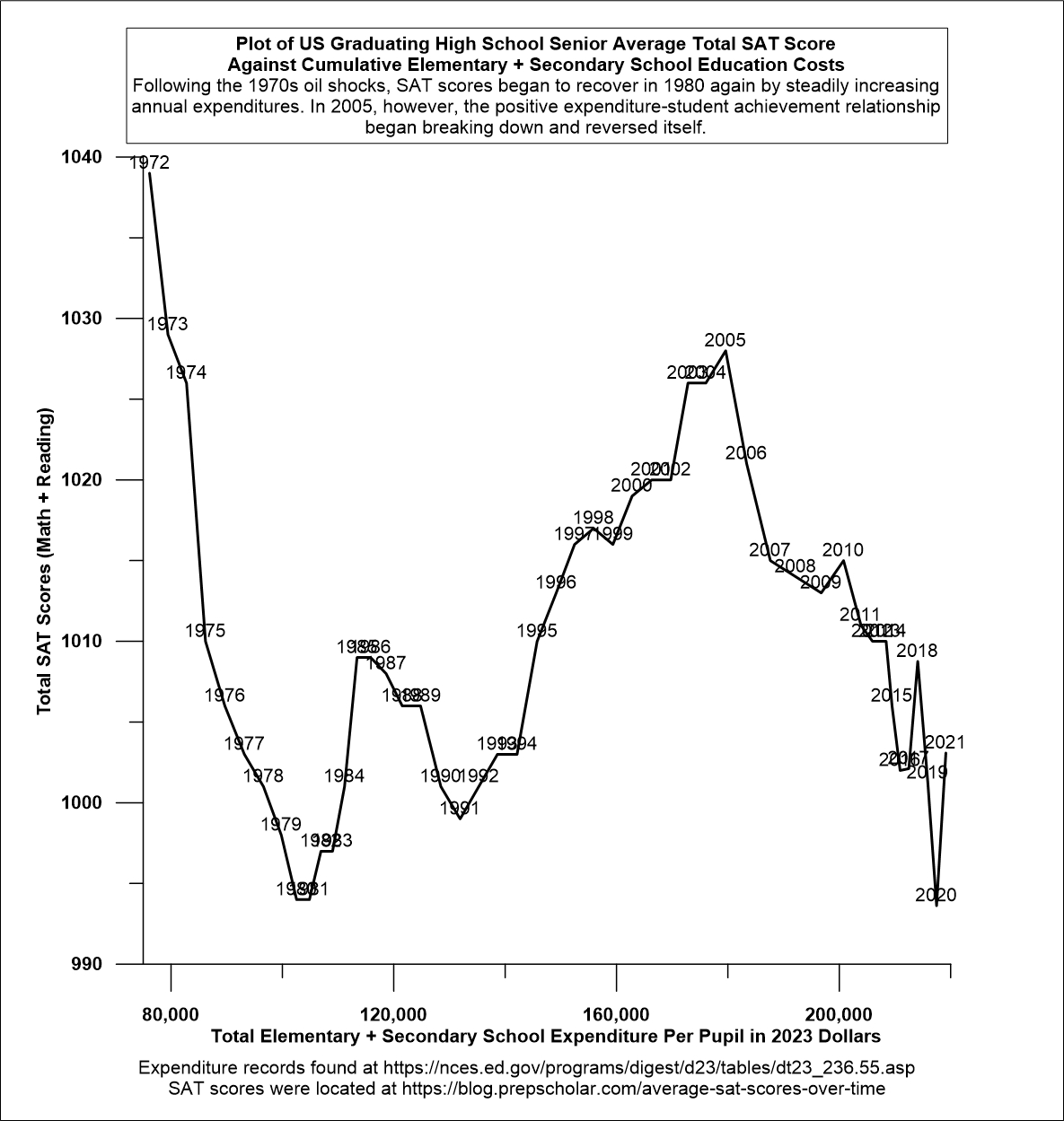Early Returns on the Break Down Effects Caused by the Fossil Fuels Depletion Problem
It looks Like Things Will Be More Difficult --and Are Earlier than Expected -- in the US
You might recall the Table embedded in this Figure from an earlier post talking about the probable timing of the onset of negative effects of global fossil fuels depletion on the various socio-economic systems of the westernized nations:

The minimum EROEIs of fossil fuel representative conventional sweet (sulfur-poor, easily refined) crude oil required to conduct the Western-style economic human activities are listed in the above Table, but note that these become increasingly less certain the higher the activity category is in the Table. Cited values up through transportation’s 3:1 EROEI are reliable, while those above that value are more speculative.
Recorded data illustrated below show that the health care systems of most of the westernized countries started to break down and become uncoupled from increased expenditures and consequent life expectancy increases in 2019 — just before the COVID19 event. The US, however, reached a comparable point of health care systems disruption in 2014, 5-6 years before most of the rest of the industrialized nations did.1 The prediction in the Table above that global westernized health care systems would begin degrading in about 2017 is therefore reasonably accurate.

Education systems time series data for the world were (so far) unobtainable by the writer, but the two graphs below show a distinct and major break down in the US education systems took place in 2005 — 18 years earlier than the Table in this post predicts. Again, this is a finding that indicates that US socio-economic systems are more fragile2 than globally expected towards the effects of fossil fuels depletion.

The next graph shows that increased per pupil expenditure in the US after 2005 was unable to stop and reverse the steep downward trend in US student academic achievement, indicating thatthe US education system is indeed broken and is no longer positively responsive to previously helpful outside inputs like increased funding.
The fact that the US education system lost its effectiveness 18 years earlier than the topmost Table predicted, suggests that the US public education system is more fragile and far less resilient than is the American health care system. Given the great contrast in the degree of training and education of the personnel involved in the two different systems, this is not surprising.
The US also exhibited an earlier major departure from the upwardly increasing life expectancy trend followed by the other western nations at the 1990-91 start of the Gulf War, a time at which US health care per capita health care expenditure was still only at about the $1,200 per year level. (It is now in excess of $12,000/year per capita in constant 2023 dollars.) Note that US life expectancy during the time of COVID19 suffered a much greater life expectancy drop than any of the other nations shown. These earlier and greater than average disturbances all suggest that the economic systems of the US are especially sensitive (more fragile) to fossil fuels depletion compared to the other westernized nations.
From Nassim Taleb: “‘Fragility’ can be defined as an accelerating sensitivity to a harmful stressor: this response plots as a concave curve and mathematically culminates in more harm than benefit from random events. ‘Antifragility’ is the opposite, producing a convex response that leads to more benefit than harm.

